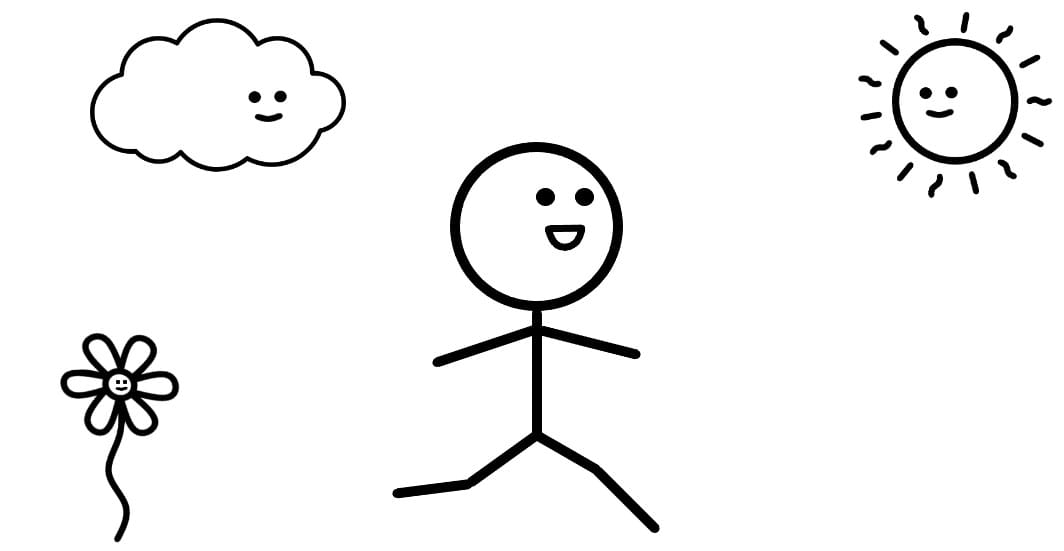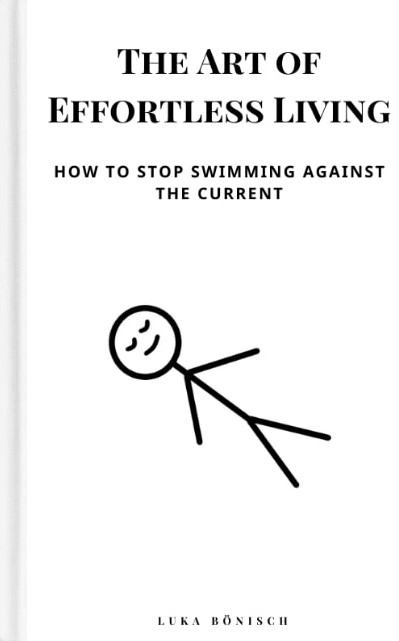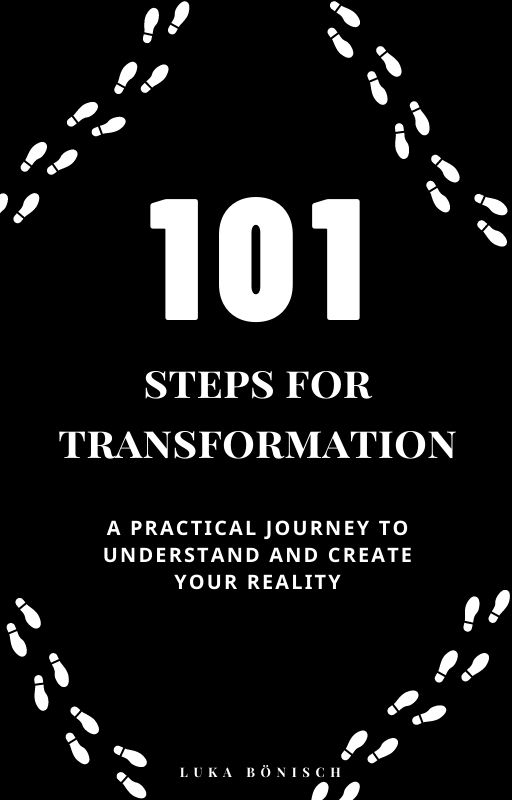
There is a paradigm of being that most people are not aware of.
Many people feel offended when you question their current somnambulistic state of being.
This is something I can and can’t understand.
I can understand it because defending, fortifying, and lashing out is what we do when our cherished beliefs about reality and ourselves are put on the stand.
I can’t understand it because what is being offered through the attack on our dusty, boring beliefs is usually something that is so much better than the herd-bound life that it should be a reason for rejoicing.
Of course it’s not a nice feeling to take a close look at the lie that is your life.
Someone might object and ask who I am to pronounce your life as a lie. Your life might not be a lie but if you feel offended by this, then it most likely is (which is not as bad as it sounds).
And besides, I’m not attacking anyone’s life or personality. I’m attacking the sub-developmental state most of us consider normal adulthood.
I could say we’re all in this together. And I guess it’s okay to say. It’s also a cliché. But really, it’s just a way to avoid the immediacy of the life that matters most — yours.
It might sound like I want to peddle some special esoteric knowledge or wisdom. That’s not the case. I want to talk about another way of being that is available to everyone.
And for this, you don’t need to read, learn, or study anything (though I guess reading about it helps). The only thing you need to look at is your own experience.
Contrary to what it might seem like, this is not about improving, growing, or developing. This is about transitioning.
It’s a caterpillar-to-butterfly kind of thing — death and rebirth.
From experience, I can say how my life used to be and how it is now is like night and day (and it still feels like I’ve only hatched). It’s the difference between dreaming and lucid dreaming.
Lucid Dreaming

The default mode of living most of us find ourselves in is akin to regular dreaming.
Everything is real and serious and, depending on your particular circumstances, alternates between pleasant and nightmare, with a little weird sprinkled in between.
In this mode of being, fear is the major driver of our lives.
In a regular dream, all the dream characters seem as real as you, and all the events seem more or less important.
Now if you’ve ever had a lucid dream you’re familiar with the wondrous experience of waking up in an imagined world that seemed all-so real before. (Note: If you’ve never had a lucid dream you might want to look into that. Experiencing lucid dreaming can dramatically alter how you perceive reality. It’s also a lot of fun.)
Before waking up you were fully locked into the dramatic narrative unfolding. You cared about the characters inhabiting your dreamspace. You wanted to make a good impression. You might have been afraid of them. You and your dream posse were all in this together.
And after waking up?
The narrative vanishes, the characters lose their influence, the dream’s sting is gone, and the dreamspace is now your playground waiting to be molded in any way you see fit.
Of course you don’t wake up as a character in the dreamspace. You wake up as the dreamspace itself.
All this is just an analogy. But it’s a damn good one.
The begging question now is how do we become lucid in the waking dream?
Emotional Tendrils

One obvious difference between dreaming and lucid dreaming is emotional involvement.
In a dream, your emotions are tightly linked with the dream events. Then you become lucid and snap all the emotional attachments are gone instantly.
This is where the dreaming dream and the waking dream differ. In the waking dream, all the emotional attachments usually don’t disappear in one swoop.
The reason for that is anyone’s guess.
My guessumption is that the dream’s length is an important factor.
I’ve read of experiences with the psychedelic plant Salvia Divinorum where people have lived, sometimes decade-long, alternate lives. All this happened in a few minutes trip time. Afterward, those psychedelic explorers were emotionally attached to their alternate lives.
Crazy stuff. Don’t do drugs kids (okay, perhaps a little is fine).
Anywhence, emotional attachments keep us in the segregated, narrative-based perspective.
You’re a balloon that wants to soar through the sky and emotional attachments are the strings that keep you fixed to the ground. One string or a hundred strings doesn’t make a real difference.
To cut the strings that keep you tied, only one thing is necessary. Clear seeing.
Clear Seeing

Clear seeing is not a special skill you acquire by prostrating at the feet of Gooroo’s. Anyone can do it right now.
All it takes is a little bit of focused attention.
Step 1, identify something you think you can’t live without.
Step 2, see that the only reason for this is a belief fueled by emotional attachment.
Step 3, recognize that the attachment taints the enjoying of the thing or person with feelings of anxiety, craving, etc., and thus diminishes your enjoyment.
Step 4, realize that there are no locks. Nothing forces you to remain attached.
This is all you need to “do.” You’re not controlling this process. You keep your eyes open and by doing so, you allow the process to unfold.
You’re not fighting attachments; you’re seeing them. It’s not you who drops the attachments; by seeing them clearly, they drop on their own.
Ridding yourself of an attachment can be difficult but there is no reason it can’t be a wonderful experience.
—
Imagine you’re on a long journey (how long you don’t know).
In the beginning, you have nothing weighing you down, no stuff to haul along. But as the journey progresses, you begin collecting all kinds of things.
Somehow it got into your head that you need all this stuff on your journey. If you at least had only a few things then that would be fine. But you have MANY things and don’t want to leave any of them behind.
You’re afraid of leaving anything behind because who knows? you might need it.
Eventually, you reach a point where every step is a burden. The heaviness of all the crap you’re heaving around is encumbering, to say the least. You’re hunched. You can’t breathe freely. You exchanged walking for shuffling.
You gaze up and see a mountain ahead. The thought of schlepping all that baggage up there fills you with dread.
You look at all your stuff. It annoys you. Finally, you see it as the burden that it is and you drop it to the ground.
You can’t believe how light you feel. You can breathe and move freely. You’re no longer afraid of losing these things.
The joy for the journey you’re on, the joy you thought you had lost, has returned. And all that was necessary was to drop the baggage.
—
Now there are a few things we need to address.
It seems as if I’m painting attachments as the bad guys here. This is not true. Attachments are simply emotions in their most imprisoning form.
The more are present the more we feel controlled and strangled by the events, people, and things in our lives.
Perhaps you know a person attached to everything in his or her life as if their life depended upon it. If you do, then you know the damage attachments can do.
They turn a human into a nervous wreck, full of fear, terrified of any curveball life might throw.
And the more attached someone is the harder it is for them to loosen their grip. Such a person assumes that the stronger they hold on to something the more likely it will remain in their life.
The attachment offers a false sense of security.
Attachments Are Sticky

It might be important to mention that a lack of attachments doesn’t mean a lack of pain and pleasure. It means a lack of attachment to the pain and pleasure. Without the sticky component, everything is more enjoyable.
There are three major reasons that make attachments so sticky.
1. Ridding yourself of an attachment can feel like you’re ridding yourself of the subject of your attachment.
This is due to a simple flaw in our thinking. We assume that to have and to keep something we need to desire it badly and hold on to it tightly.
We fear that without desire and holding on, we will never get what we want and lose everything we have. Fear is playing some mind tricks on us here.
There’s no reason to worry. The fear you’re experiencing is a side-effect of the withdrawal of emotional energy.
2. We believe that some attachments are desirable.
Attachment to family hits differently than attachment to your favorite pair of underwear.
I can already intuit your question through the screen:
If I’m no longer attached to people, does that mean I’ll no longer care about them?
Nope, that’s not what it means.
Let me illustrate this. You know how you can sometimes be an ass to the people you love, only because they don’t fulfill your expectations?
That part will be gone. The insistence that people make you happy or act according to your demands will be gone.
On the flip side, people will no longer be able to manipulate and blackmail you emotionally. In other words, you’ll enjoy people without the need factor.
If someone close to you dies, you’ll still be sad. What will be lacking is the sticky component of the sadness that tries to convince you that you can’t live without this person.
3. The artificial self we believe ourselves to be is one big attachment.
Cleaving attachments can feel like chopping away at your very own self.
This, as well, is nothing to be concerned about. You’re not chopping away at anything real. What you’re taking apart is the fabricated self.
This fabricated self is already non-existent. Nothing real is being threatened here. Instead, you’re reclaiming the energy that’s been flowing into animating an illusion.
What’s the Point Again?

All of the above is part of a process that leads to the emergence of a different way of life.
The way of life or rather paradigm of being I’m arguing for isn’t tied to any rules of thinking, feeling, and acting.
It’s simply another (better) way of being in the world. It’s being in the world but not of it, as someone has once said.
It’s a fine but profound shift. You realize that you are not a person having an experience but the experience itself. You realize that you and your environment are inseparable.
What this means for your experience is that you’re no longer fighting with the world. You’re no longer puppeteered by fear.
Your interest in vanity-based pursuits subsides. You no longer need others to tell you how to live your life. You’ll start doing what you like to do in the present moment.
Synchronicities are no longer an exception; they are the rule.
Thoughts take a step back and are no longer your primary means of navigating your experience. Instead, you’ll recognize the larger energetic patterns of your life and move with them. We can call it intuition but intuition is just one part of it.
To put it differently, life is no longer a matter of narrative but of intimate experience.
This way of being is something you get better and better at. It’s a bit like balancing on a tightrope.
It’s a sense of being in or out of alignment.
You will fall out of alignment but getting back will be way easier without all the baggage you used to carry around. After a while, you’ll recognize the slightest fluctuations in perceived rightness and wrongness and can adjust before falling out of alignment.
When you’re aligned, things often automagically fall into place. Effortlessness will become part of your experience.
It sounds like I’m describing a fairytale but the truth is that many fairytales are second-rate to this. This isn’t even spiritual or anything like this. It’s natural.
It’s the result of removing the artificial walls that have kept you in imagined separation.
There is no new belief system here. All it is, is a better way of life.
Luka
Latest posts by Luka (see all)
- The Maelstrom Called You — Why Every Person Is Ecelctic - July 17, 2025
- How to Use Words Correctly - July 8, 2025
- Guilty Until Imagined Innocent - June 25, 2025


